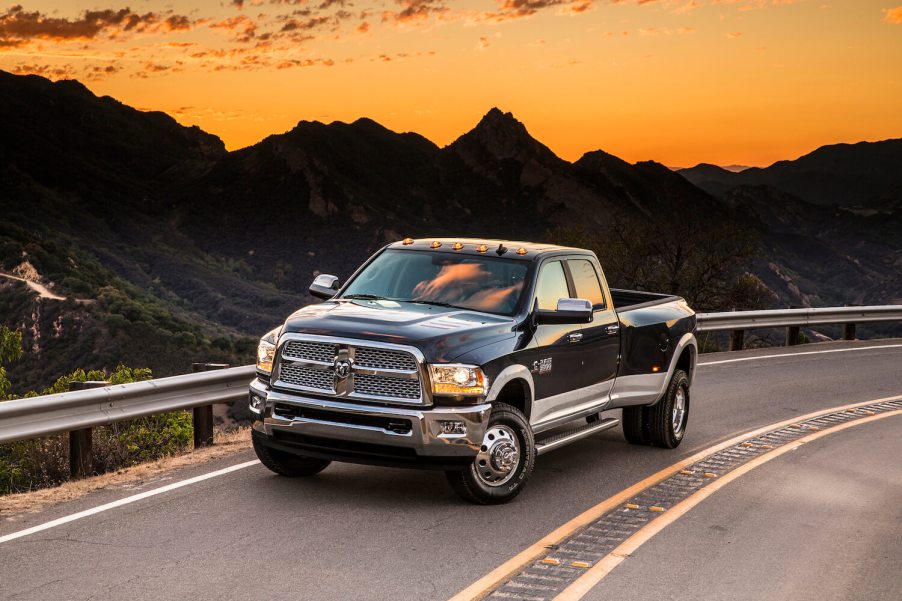
Who Killed the Manual Transmission Full-Size Pickup Truck?
Once upon a time, the manual transmission was the default transmission choice for a pickup truck. The automatic was a luxury option that robbed trucks of both power and mpg. But the final full-size pickup truck with the manual transmission (the 2018 Cummins-powered Ram) has come and gone. So who is to blame for the death of the manual transmission pickup truck? The truth is that increased engine torque, government regulations, and the capabilities of the average driver are all partially responsible. But at the end of the day, we killed the manual truck; automakers don’t offer manual transmission full-size trucks because so few drivers want to buy them.
The torque wars left manual transmissions in the dust

As a fan of classic trucks, every pickup I’ve owned has had three pedals. But I know every manual has a weak point: its clutch. And modern engines make a lot more torque, too much for the final generation of manual transmissions.
Take, for example, the first gen Cummins-powered Dodge Ram. The 5.9-liter turbodiesel I6 made just 160 horsepower and 400 lb-ft of torque. Classic truck fans know that the manual transmission available behind this engine is a great option and will often last as long as the diesel itself.
Fast-forward to 2018 and the Cummins 6.7-liter turbodiesel I6 available in the heavy-duty Ram made up to 385 horsepower and 930 lb-ft of torque. That’s a lot of power to put through a manual transmission. It’s no wonder that the 2018 engine in the stickshift Ram was detuned, making 35 horsepower less than the same Cummins in an automatic transmission truck (350 horsepower).
According to Cars.com, automakers could conceivably engineer a next-generation manual transmission capable of handling this much torque. But that would be a very expensive process. And to tell the truth, there just aren’t enough pickup truck buyers checking the stick shift box to justify the investment.
Did the government kill the manual transmission pickup truck?
A common myth I’ve heard is that strict fuel emissions regulations led to the death of the manual transmission full-size pickup truck. And the fact that the final manual (the Cummins-powered Ram) was detuned seems to support this rumor. But emissions was probably one of multiple reasons for the death of the manual transmission pickup truck.

Back in 1997, the vice president of engineering technologies at Dodge Ram and Jeep, Bernard Robertson, offered some prophetic words to the LA Times: “Emissions standards are going to tend to make manuals a challenge…We may not offer a manual in California because of the more stringent emissions standards out there.”
The 2018 Cummins-powered Ram truck did have to meet some pretty stringent emissions requirements. For FCA’s combustion engineers, meeting emissions with an automatic truck wasn’t as tricky. They simply adjusted the truck’s shift points to make sure the engine idled below any highly-polluting RPMs. No coal-rolling allowed.
But obviously a manual transmission truck was a bit more of an issue. This is because the driver could simply downshift, floor it, and rev the engine.
In addition, vehicles need to meet “pass-by noise requirements.” Meeting these requirements in manual vehicles with loud V8 or diesel engines often requires retuning those engines’ torque curves.
An easy shortcut for Ram to meet these government requirements was to simply detune the Cummins engine in its manual transmission trucks. Could Ram and the government have agreed upon a full-powered diesel Ram with a stick shift? Probably. At most it would have needed a different exhaust system or control unit.
But meeting emissions regulations and noise requirements costs a ton of money. So from Ram’s point of view, pouring money into a manual transmission truck that can meet emissions requirements despite lackluster sales would have been a poor investment.
Did drivers kill the manual transmission?
When the stick shift was the default transmission, every American driver had to know how to operate three pedals. Today, every driver’s education car is an automatic and only an elite few young drivers learn to drive a manual. The result is plummeting stickshift sales.

Even the EPA recognizes that a good driver in a stick shift gets better fuel mileage, and thus pollutes less, than an automatic transmission—according to Slate. But a poor driver in a manual transmission has the potential of polluting more.
Any of the major issues with manual transmissions–handling the torque of new engines or meeting modern regulations–is not insurmountable. Heck, Ram still offers a manual transmission pickup truck on the Mexican market. But so few modern truck buyers want a manual transmission, that automakers can’t justify developing and selling one.
Next, learn about the manual transmission Ram 4000 sold in Mexico or see a review of the manual 2018 Ram in the video below:




